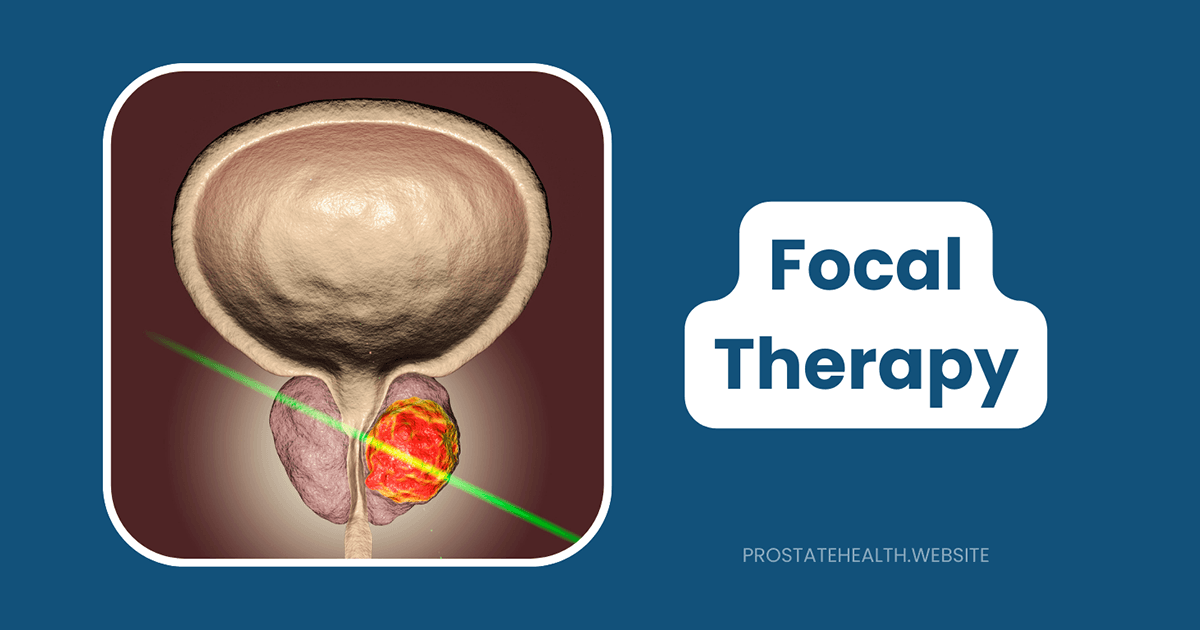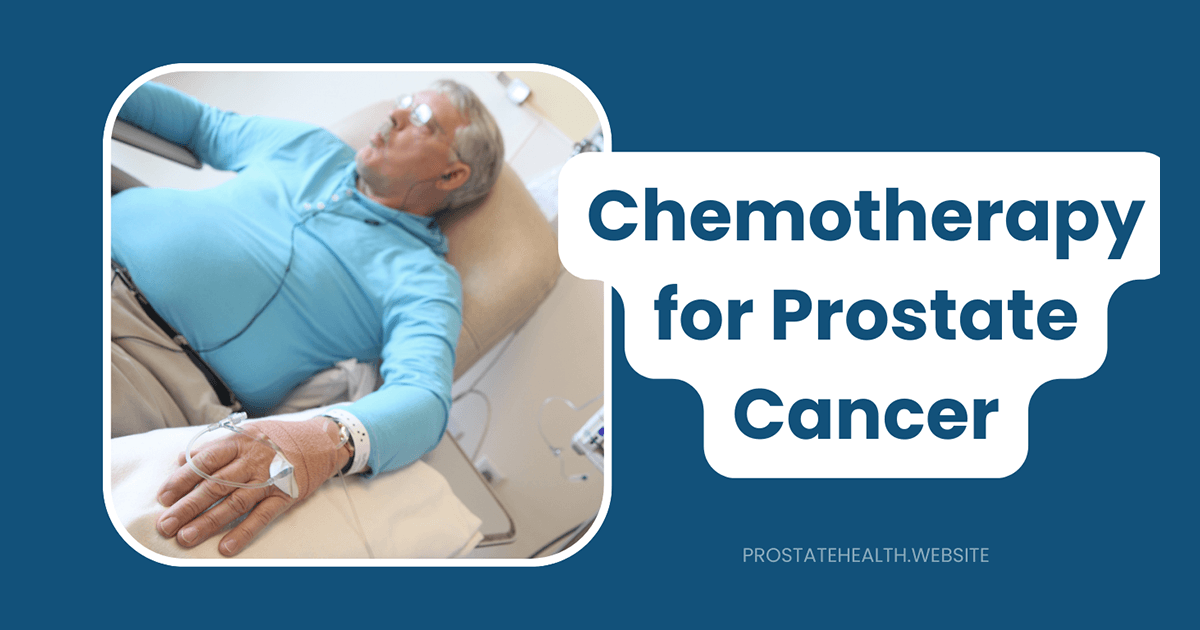Active Surveillance: When Watching and Waiting Is the Best Approach

When you hear the words “prostate cancer,” your mind might immediately jump to surgery, radiation, or other aggressive treatments. However, for many men diagnosed with prostate cancer, the best initial approach might be something that seems counterintuitive: carefully monitoring the cancer rather than treating it right away.
This approach, known as active surveillance, has become the guideline-recommended standard of care for men with low-risk prostate cancer. As someone who has spent years advocating for men’s prostate health, I’ve seen firsthand how this strategy has transformed the landscape of prostate cancer management, sparing many men from unnecessary treatments while maintaining excellent long-term outcomes.
In this comprehensive guide, we’ll explore what active surveillance is, who it’s right for, what it involves, and why it might be the best choice for many men facing a prostate cancer diagnosis.
Understanding Active Surveillance: More Than Just Waiting
Active surveillance is not simply “doing nothing” or “watchful waiting.” It’s a structured, proactive monitoring program designed to track low-risk prostate cancer closely while avoiding or delaying treatment until (and if) it becomes necessary.
Active Surveillance vs. Watchful Waiting
It’s important to distinguish between these two approaches:
Active Surveillance:
- Involves regular, scheduled monitoring with tests and examinations
- Goal is to detect cancer progression early enough to offer curative treatment
- Typically recommended for younger men with longer life expectancy
- Requires commitment to follow-up appointments and procedures
Watchful Waiting:
- Less intensive monitoring, often symptom-based
- Goal is to manage symptoms if they develop
- Typically recommended for older men or those with significant health issues
- Treatment, if needed, is usually palliative rather than curative
According to the American Cancer Society, active surveillance means monitoring the cancer closely with a plan to treat it if tests show it’s starting to grow more quickly. This approach recognizes a fundamental truth about prostate cancer: many cases grow so slowly that they may never cause problems during a man’s lifetime.
The Science Behind Active Surveillance
The rationale for active surveillance is supported by compelling scientific evidence:
Prevalence of Indolent Prostate Cancer
Autopsy studies reveal that about 50% of men over 50 and 30% of men in their 30s have histologic evidence of prostate cancer that never caused symptoms during their lifetime. This suggests that many prostate cancers are indolent (slow-growing) and may never become clinically significant.
Long Natural History
The average time from prostate cancer inception to mortality can be up to 50 years, providing a long window of curability for most patients. This extended timeline means that immediate treatment isn’t always necessary.
Excellent Long-Term Outcomes
Long-term studies show that men with low-risk prostate cancer on active surveillance have favorable outcomes over 10, 15, and 20 years. A systematic review involving over 2,130 patients on active surveillance reported overall survival rates of 90% and cancer-specific survival rates of 99.7% at a median follow-up of 43 months.
Treatment Side Effects
Treatments for prostate cancer, including surgery and radiation, can cause significant side effects such as erectile dysfunction, urinary incontinence, and bowel problems. Active surveillance allows men to avoid or delay these side effects, potentially for many years or even indefinitely.
Who Is a Good Candidate for Active Surveillance?
Not all men with prostate cancer are suitable candidates for active surveillance. The selection criteria have evolved over time and continue to be refined, but generally include:
Clinical Criteria
According to the American Society of Clinical Oncology and Johns Hopkins Medicine, good candidates for active surveillance typically have:
- Cancer confined to the prostate (clinical stage T1-T2a)
- Low Gleason score (typically Gleason 6, or Grade Group 1)
- Low PSA level (usually less than 10 ng/mL)
- Limited amount of cancer on biopsy (typically fewer than 3 cores positive and less than 50% involvement in any core)
- Low PSA density (PSA divided by prostate volume)
Expanding Criteria
Recent research suggests that active surveillance may also be appropriate for select men with:
- Favorable intermediate-risk disease (Gleason 3+4=7, or Grade Group 2)
- Limited volume of Gleason pattern 4 (less than 10%)
- Older age (over 70) with higher-risk disease but limited life expectancy
According to a study published in Translational Andrology and Urology, the proportion of US men with low-risk prostate cancer choosing active surveillance increased from about 10% to nearly 50% in recent years, reflecting growing confidence in this approach.
Personal Factors
Beyond clinical criteria, several personal factors should be considered:
- Life expectancy (generally at least 10 years to benefit from curative treatment if needed)
- Comfort level with having untreated cancer
- Ability to adhere to the monitoring schedule
- Preference for quality of life in the near term over potential long-term consequences
What Does Active Surveillance Involve?
Active surveillance is not passive—it requires commitment to a structured monitoring program. While protocols vary between institutions, most include:
Initial Confirmation
- Confirmatory biopsy within 6-12 months of diagnosis
- Multiparametric MRI to ensure no higher-grade cancer was missed
Ongoing Monitoring
- PSA testing every 3-6 months
- Digital rectal examination (DRE) at least annually
- Repeat biopsies every 1-5 years (frequency varies by protocol)
- MRI every 1-2 years (increasingly common in modern protocols)
According to Johns Hopkins Medicine, their recommended testing schedule includes PSA testing every three to six months, a digital rectal exam at least once a year, and a prostate biopsy at least every two to five years after an initial follow-up biopsy.
Triggers for Intervention
The decision to move from surveillance to active treatment is typically based on:
- Grade progression (increase in Gleason score)
- Increase in tumor volume (more positive cores or greater core involvement)
- PSA kinetics (rapid rise in PSA)
- Clinical progression (palpable change on DRE)
- Patient preference (some men choose treatment due to anxiety)
It’s worth noting that approximately one-third of patients on active surveillance are eventually reclassified as higher risk and receive treatment. However, studies show that delayed treatment in these cases does not compromise cancer outcomes.
The Benefits of Active Surveillance
Choosing active surveillance offers several significant advantages:
Avoiding Treatment Side Effects
By delaying or potentially avoiding treatment altogether, men can preserve:
- Sexual function
- Urinary continence
- Bowel function
- Overall quality of life
Psychological Well-being
Contrary to what might be expected, research shows no significant differences in anxiety or depression between patients on surveillance and those treated radically. Many men report relief at avoiding immediate treatment while still actively managing their cancer.
Cost-Effectiveness
Active surveillance is significantly more cost-effective than immediate treatment, both for the healthcare system and for individual patients, while maintaining excellent cancer outcomes.
Time for Decision-Making
Active surveillance provides time to:
- Research treatment options thoroughly
- Consult multiple specialists
- Consider emerging treatments that may become available
- Prepare physically and mentally if treatment becomes necessary
Challenges and Considerations
While active surveillance offers many benefits, it’s not without challenges:
Psychological Burden
Some men experience anxiety knowing they have untreated cancer. This “cancer anxiety” can be significant for some patients and should be discussed openly with healthcare providers.
Commitment Required
Active surveillance requires discipline in following the monitoring schedule, including regular PSA tests and periodic biopsies, which can be uncomfortable.
Risk of Progression
There is a small risk that the cancer may progress between monitoring visits. However, with proper adherence to the surveillance protocol, this risk is minimized.
Variability in Protocols
A 2025 study highlighted that only 11% of patients adhere to published guidelines for active surveillance, indicating a gap between guidelines and real-world clinical practice. This variability can create confusion for patients.
Real-World Success: John’s Story
John, a 64-year-old retired teacher, was diagnosed with Gleason 6 prostate cancer five years ago. His PSA was 4.2 ng/mL, and two of twelve biopsy cores showed cancer, with less than 20% involvement in each core.
“When I was diagnosed, my first instinct was to get the cancer out immediately,” John recalls. “But my urologist explained that my cancer was low-risk and that active surveillance was a valid option. After discussing it with my family and getting a second opinion, I decided to go that route.”
Five years later, John remains on active surveillance. His PSA has remained stable, and two follow-up biopsies have shown no progression. He continues to enjoy an active lifestyle, including golf and travel, without experiencing any treatment side effects.
“I still have regular check-ups, and yes, the biopsies aren’t fun,” John admits. “But knowing I’ve avoided potentially life-altering side effects while still effectively managing my cancer gives me peace of mind. If things change, I know we’ll catch it early enough for successful treatment.”
Advances in Active Surveillance
The field of active surveillance continues to evolve, with several exciting developments:
Role of MRI
Multiparametric MRI has revolutionized active surveillance by:
- Improving initial patient selection
- Enabling targeted biopsies of suspicious areas
- Potentially reducing the frequency of repeat biopsies
- Providing earlier detection of significant changes
According to a 2025 update from the European Association of Urology, there have been significant updates to MRI protocols in prostate cancer management, including its use in active surveillance.
Genomic Testing
Several tissue-based biomarkers and genetic tests are being evaluated to:
- Better identify candidates for active surveillance
- Predict which cancers are likely to progress
- Potentially reduce the need for frequent biopsies
Liquid Biopsies
Blood and urine tests that detect cancer biomarkers are under investigation as less invasive monitoring tools for men on active surveillance.
Making the Decision: Is Active Surveillance Right for You?
If you’ve been diagnosed with prostate cancer, consider these steps when evaluating active surveillance:
1. Ensure Proper Risk Stratification
- Get a second opinion on your pathology
- Consider an MRI if not already done
- Discuss genomic testing options with your doctor
2. Understand Your Protocol
- Ask for specifics about the monitoring schedule
- Discuss what triggers would lead to treatment
- Understand the commitment required
3. Consider Your Personal Factors
- Age and overall health
- Family history
- Personal preferences regarding quality of life vs. cancer control
- Comfort level with having untreated cancer
4. Explore Support Resources
- Support groups specifically for men on active surveillance
- Educational materials from reputable organizations
- Psychological support if needed
The Future of Active Surveillance
The landscape of active surveillance continues to evolve:
Expanding Eligibility
Research suggests that more men may benefit from active surveillance than previously thought, including select patients with favorable intermediate-risk disease.
Personalized Protocols
Rather than one-size-fits-all approaches, surveillance protocols are becoming more tailored based on individual risk factors, MRI findings, and biomarker results.
Integration of New Technologies
Artificial intelligence, advanced imaging, and novel biomarkers are likely to enhance the precision and reduce the invasiveness of active surveillance in coming years.
According to the Prostate Cancer Research Institute’s 2025 midyear update, ongoing research is focused on active surveillance, prostate imaging, and the development of new tumor markers, which will further refine this approach.
The Bottom Line: A Rational Approach to Low-Risk Prostate Cancer
Active surveillance represents a paradigm shift in prostate cancer management—moving away from treating every cancer immediately to a more nuanced approach that balances cancer control with quality of life.
For men with low-risk and select cases of favorable intermediate-risk prostate cancer, active surveillance offers the opportunity to:
- Avoid unnecessary treatment and its side effects
- Maintain quality of life
- Preserve treatment options for the future
- Achieve excellent long-term cancer outcomes
The American Urological Association (AUA) recommends active surveillance as the best option for very low-risk localized prostate cancer and as a preferable option for most low-risk cases. With cancer-specific survival rates of 96-100% at ten years, active surveillance has proven to be not just a reasonable alternative to immediate treatment, but often the optimal choice.
Remember that active surveillance is not “doing nothing”—it’s a deliberate, evidence-based strategy that acknowledges the often indolent nature of prostate cancer while maintaining the ability to intervene if necessary. For many men, it truly represents the best of both worlds: cancer control without unnecessary treatment side effects.
Have you or a loved one been diagnosed with prostate cancer? Has active surveillance been discussed as an option? Share your experience in the comments below.






